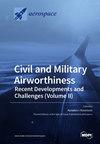Conceptual Design of an On-Axis 6 m Space Telescope at the Diffraction Limit: Characteristics, Performance and Advantages
IF 2.2
3区 工程技术
Q2 ENGINEERING, AEROSPACE
引用次数: 0
Abstract
This paper presents the conceptual design of an on-axis 6 metre aperture space telescope designed to cover a field of view of ±0.2 degrees with an optical quality at the diffraction limit within a spectral range between 0.5 μm and 2.5 μm. The plate scale is 3 arcsec/mm, and the overall length is less than 12 m. A Korsch layout has been selected based on the superb aberration compensation offered by Three-Mirror Anastigmat systems. The proposed design presents some characteristics: an almost flat response in RMS wavefront error across the field and for the entire spectral range; a flat mirror has been included to reduce the overall volume, and this has been adjusted to be placed at an intermediate pupil position, acting as a baffle for stray light and as a Lyott to restrict background radiation. This mirror presents a central hole, defined to the aperture of the pupil, allowing the transmission of the beam towards the image focal plane, where it can be split for multiple payloads. It also allows the transmission of the central field, at 90 degrees with respect to the science beam, to be used for Active Optics monitoring and correction of the primary mirror in order to ensure optimum optical performance. This on-axis solution significantly reduces the technical complexity for manufacturing, metrology, integration, and tests and has an important impact in the cost of the telescope.衍射极限轴上 6 米太空望远镜的概念设计:特性、性能和优势
本文介绍了轴上 6 米孔径空间望远镜的概念设计,该望远镜的视场角为±0.2 度,在 0.5 μm 至 2.5 μm 光谱范围内的光学质量达到衍射极限。根据三镜式 Anastigmat 系统提供的出色像差补偿,我们选择了 Korsch 布局。该设计方案具有以下特点:在整个视场和整个光谱范围内,有效值波前误差的响应几乎是平的;包括一个平面镜,以减小整体体积,并将其调整到瞳孔的中间位置,作为杂散光的挡板和限制背景辐射的 Lyott。这面反射镜上有一个与瞳孔孔径一致的中心孔,可将光束传输到图像焦平面,在那里可将光束分割成多个有效载荷。它还允许与科学光束成 90 度的中心场传输,用于主镜的主动光学监控和校正,以确保最佳光学性能。这种轴上解决方案大大降低了制造、计量、集成和测试的技术复杂性,对望远镜的成本也有重要影响。
本文章由计算机程序翻译,如有差异,请以英文原文为准。
求助全文
约1分钟内获得全文
求助全文
来源期刊

Aerospace
ENGINEERING, AEROSPACE-
CiteScore
3.40
自引率
23.10%
发文量
661
审稿时长
6 weeks
期刊介绍:
Aerospace is a multidisciplinary science inviting submissions on, but not limited to, the following subject areas: aerodynamics computational fluid dynamics fluid-structure interaction flight mechanics plasmas research instrumentation test facilities environment material science structural analysis thermophysics and heat transfer thermal-structure interaction aeroacoustics optics electromagnetism and radar propulsion power generation and conversion fuels and propellants combustion multidisciplinary design optimization software engineering data analysis signal and image processing artificial intelligence aerospace vehicles'' operation, control and maintenance risk and reliability human factors human-automation interaction airline operations and management air traffic management airport design meteorology space exploration multi-physics interaction.
 求助内容:
求助内容: 应助结果提醒方式:
应助结果提醒方式:


